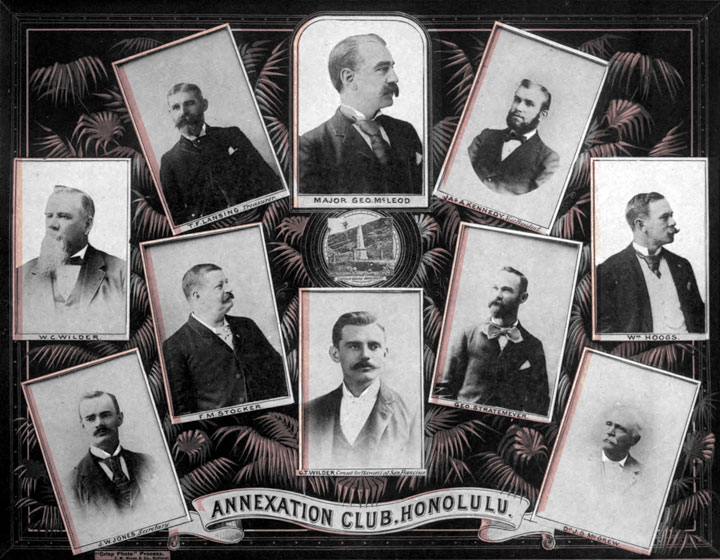Aloha e Dr. Kishimoto,
This letter requests your support to change the name of President William McKinley High School. The honor given to McKinley celebrates dishonorable and reprehensible actions by him as President in pushing for U.S. appropriation of Hawaiʻi while knowing fully that more than 90% of the population wanted the restoration of their Queen and their kingdom. I am requesting this change under the provisions of Board of Education Policy 301-8, Naming of Schools and School Facilities:
“The name of a school shall be recommended by the Superintendent of Education. The recommendation, with its supporting reasons, shall be submitted to the Board of Education for approval.”
William McKinley is not only undeserving of having a school in Hawaiʻi named after him, but is also unworthy of a statue being erected in his honor.
In 1907, Honolulu High School was renamed President William McKinley High School because, according to the school website, McKinley “helped to bring about the annexation of the Hawaiian Islands to the United States.”
But that underestimates his role. This is the same McKinley responsible for the McKinley Tariff, which substantially reduced the income of Hawaiʻi sugar growers from $12,159,084 in 1890 to $6,963,504 in 1892, and effectively goaded them into the 1893 overthrow of Queen Liliʻuokalani in order to revive their profits through Annexation.
Five years after the Overthrow, during an Annexation debate in the Senate on May 31, 1898, Senator John Morgan (known for The Morgan Report) commented:
“The President of the United States (McKinley) has got his mind made up that as a matter of military necessity he is obliged to take those islands and intends to do it.”
There was no military necessity. Instead, there was the ideology of Manifest Destiny, under which the U.S. crushed Indian nations as it expanded its control across the continent, and then the Pacific, taking the Philippines, Guam and Hawaiʻi as well.
Prior to Hawaiʻi being illegally annexed, both the Kūʻē Petitions, objecting Annexation and signed by 95% of native Hawaiian adults, and also Queen Liliʻuokalani’s letter of protest, had reached Congress. It was well known by all in Congress that the newly established government, the Republic of Hawaiʻi, which was a product of the Overthrow, did not represent the will of the people. The U.S. Constitution requires a “Yes” vote by two-thirds of those present in the U.S. Senate in order to ratify a treaty of annexation. After a failed attempt to get the two-thirds vote in 1893, and two more failed attempts in June and September of 1897, McKinley pushed for Joint Resolution 259 (the Newlands Resolution) and signed it into law on July 7th, 1898. In truth, a lawful annexation never occurred because a Joint Resolution of Congress is a domestic measure, having no lawful application or authority beyond U.S. borders. And though the document in the hand of the McKinley statue on the campus reads “Treaty of Annexation,” it represents a lie. No Treaty of Annexation was ever ratified.
When Honolulu High School moved to the corner of Beretania and Victoria Streets in 1907, the name of the school was changed to honor McKinley, an insult to the majority of the people of Hawaiʻi. Then, embracing the Department of Education’s 1906 “Patriotic Program for School Observance--the means for inculcating [American] patriotism in the schools,” President William McKinley High School then became a principal tool for destroying the Hawaiian culture, language, and identity, through the indoctrination and thorough Americanization of the youth.
To have a high school named after a person so dedicated to the eradication of a host culture’s beloved nation would cause great pain for any peoples. In addition, to have that person immortalized as an eight-ton statue would be a daily reminder of the injustices and lies that continue to this day. William McKinley is a false hero. His name and statue ignore his wrongdoings which set the stage for the decimation of the Native people. This is happening in Hawaiʻi, right in the educational system that you lead. One of the purposes of education is to create perpetual learners and seekers of truth. The high school name and statue are contrary to that purpose. If other places across the continent can correct a wrong by renaming their insensitively named schools and removing their dishonorable statues, so can we.
To be very clear, this is not, by any means, a slight to the students, graduates, and memories of President William McKinley High School. A name change and the removal of the statue does not diminish the school’s achievements. Neither does it diminish its ethos or the interests of the alumni. The accomplishments and history will never be erased.
I request that you recommend to the Board of Education that the name of President William McKinley High School be changed and to create a panel of Hawaiian historians to suggest worthy names more deserving of this great honor.
If you would like to be personally briefed on the historical relationship between William McKinley and Hawaiʻi, Dr. Larson Ng, an Educational Specialist in the College of Education at the University of Hawaiʻi at Mānoa, is readily available to do so. Dr. Ng is a 1992 graduate of President William McKinley High School. I would be happy to arrange a meeting with him for you.
Please do not hesitate to contact me if you have any questions, concerns, or thoughts. I appreciate your valued time and consideration.





